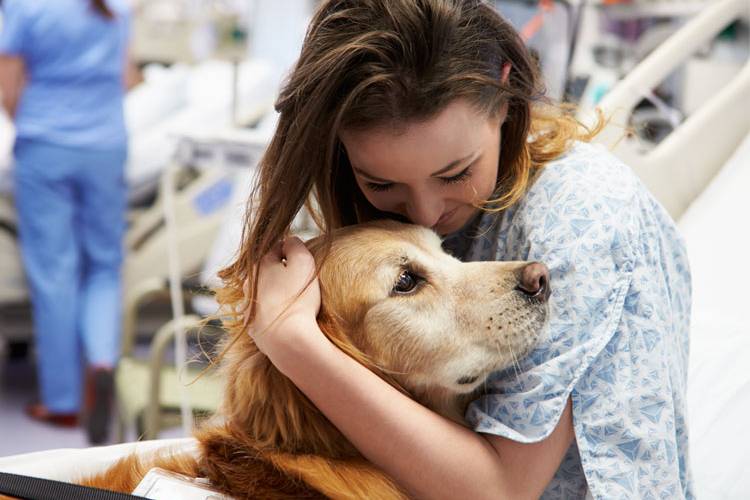Therapy animals: the strength of motivation
Dogs, horses, rabbits, guinea pigs, lovebirds... More and more animals are being introduced into Animal-Assisted Therapy. But are some more suitable than others? What benefits does each one bring?
pets
Share

Professionals in the field ensure than almost all animals can be useful, although the specific characteristics of some of them can be more beneficial to achieve certain objectives.
Dogs are the kings of therapy thanks to their versatility, motivation and the link they create with people. This is why their participation in interventions is going further than therapy and they are being used in other activities to improve peoples’ quality of life. Here are some that are being carried out in our country:
INTERVENCIÓN RESIDENCIAL
The Affinity Foundation introduced this type of activity in Spain 30 years ago. It consists in letting a dog live with the person. Currently, this is being carried out in fourteen penitentiary centres, six retirement homes, one juvenile facility and six mental health centres.
Benefits:
• Makes these peoples’ situation feel more normal.
• Gives them more responsibility.
• Increases their self-esteem.
• In retirement homes, increases family visits.
THERAPY
The Affinity Foundation started this activity 20 years ago and is carrying out research projects to give Animal-Assisted Therapy a scientific ground. Currently, they work with the Buddies programme destined to minors in care, in which 112 children from 12 to 17 years have taken part.
Benefits:
• Reduction of aggressive behaviour.
• Higher tolerance to frustration.
• Better capacity to express emotions.

EDUCATION
The Perruneando charity has brought dogs into the classroom, thanks to its pioneering project of Animal-Assisted Education, which is being carried out in twelve schools of the Jaén province, with the participation of 800 primary school children.
Benefits:
• Improves social skills
• Encourages autonomy and emotional intelligence.
• Teamwork.
• Respect of rules, among other things.
CRISIS MOMENTS
Dogtor Animal, a charity which has worked in Madrid in therapy with animals for the last 9 years, is carrying out a pioneering project in Spain of Crisis Intervention with Animals, in which around 80 children between 6 and 12 years old, who have had to testify in court for any reason, have taken part.
Benefits:
• Increase in self-assurance.
• Reduction of anxiety.
• Higher relaxation to testify with more details, coherently, fluidly and reliably.
VOLUNTEER WORK
In Valencia, the pilot volunteering experiment “Can de la Mano” has been carried out at the La Fe Hospital for a year, with 20 meetings between seven assistance dogs and nine children, between the age of four and thirteen in Paediatric Oncology. Both the families of the children and the hospital staff said the initiative was highly beneficial.
LEISURE
The Acavall Foundation, only foundation of the Valencian Community dedicated to Animal-Assisted Intervention, has a leisure programme called Escoletas Qué Animalada! which it carries out at Christmas, Easter and in summer. Over 700 children with different abilities take part in it, and as well as enjoying activities and games with dogs, rabbits, lizards, etc., they learn values such as tolerance, cooperation and the respect of differences.
OTHER ANIMALS
There are other animals which provide great benefits, such as horses. When users ride them, they receive benefits such as the heat value, the transmission of rhythmic impulsions or three-dimensional movement, which are very useful to work on their physical dimension, to improve their balance or to acquire new skills.
Some charities are also introducing small animals in these activities, such as lovebirds, guinea pigs, rabbits, rats or chinchillas, because their small size offers advantages such as being able to hold them, needing higher precision when handling them or improving attention.






